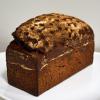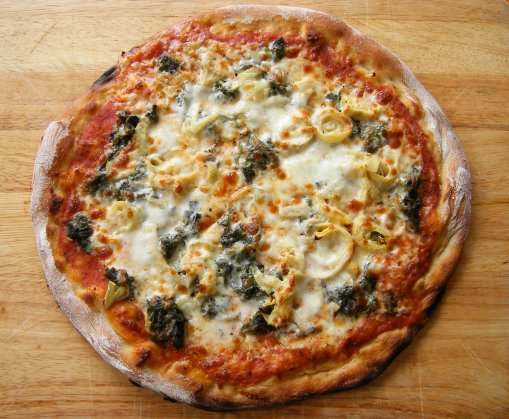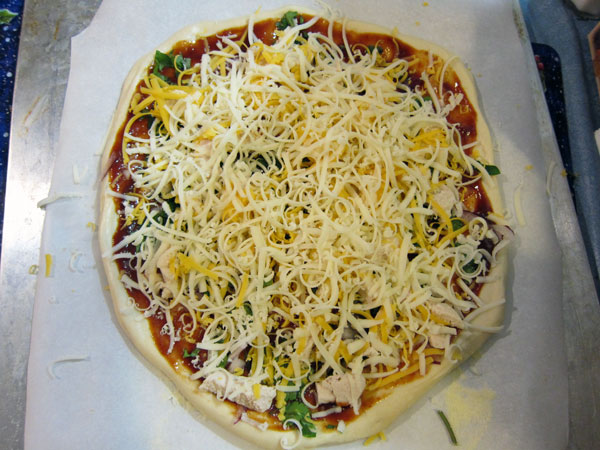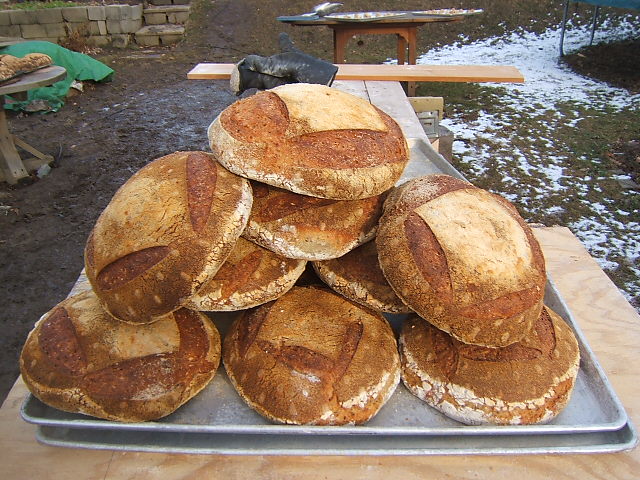
You can go nuts trying to find the perfect pizza dough formula. The cookbooks and the web are full of recipes for various types of dough and full of opinions regarding the type of flour to use, the ingredients (beyond flour, water, salt and yeast) and the mixing and fermentation methods that work best.
My goal for today was what I understand to be classic pizza napoletana. The dough should consist of the four basic ingredients only – no oil, sugar, malt or other stuff. The crust should be very thin and crisp on the bottom, not soft or soggy. The toppings should be minimal, so the crust is the main attraction.
After reading through many, many recipes, I settled on the one in Maggie Glezer's “Artisan Breads.” It uses the 4 ingredients only. It is for a Naples-style pizza. It is credited to Emanuele Leonforte of Hosteria restaurant in Port Chester, New York.
Leonforte uses a mix of Doppio Zero and high-gluten flour that Glezer calculates as resulting in about 12.5% protein. He uses a remarkably short mix. He ferments the dough for a long time but only once. Glezer gives the option of retarding the dough overnight and fermenting it the next day, and that fit best with my schedule. The method I used is described below.
Ingredients | Wt. | Baker's % |
KAF Bread Flour | 500 g | 100 |
Instant yeast | 1/4 tsp | 0.2 |
Salt | 10 g | 2 |
Water, lukewarm | 330 | 66 |
Method
Measure the flour, yeast and salt into the bowl of a stand mixer and mix them.
With the dough hook in place and the mixer at slow speed, gradually pour in the water.
Mix until the dough forms a ball and cleans the side of the bowl, about 3 minutes.
Cover the bowl and let the dough rest for 10-15 minutes.
Mix the dough at Speed 2 for about 3 minutes. It should be fairly smooth but will not pass the window pane test.
Transfer the dough to a lightly floured board and divide it into 4 equal pieces of about 200 g each (to make 10 inch pizzas).
Shape each piece into a tight ball.
Place each ball into a 1 qt Ziploc bag with a tablespoon of olive oil. Roll the ball in the oil and seal the bags.
The dough can be refrigerated overnight, frozen for later use or allowed to ferment at room temperature for 5 to 6 hours for use the same day. (I refrigerated two balls and froze two.)
For refrigerated dough, remove it to room temperature 3-5 hours before you plan on making the pizza, depending on room temperature.
An hour before baking, pre-heat the oven to 500ºF (or more, if possible) with a baking stone on the middle shelf.
Remove one ball at a time from its bag and shape into a 10 inch round by your method of choice.
Top the pizza as desired, immediately transfer it to the baking stone, and bake for 8-10 minutes until done. Repeat for additional pizzas.
The toppings I used for each pizza were:
Brush the entire surface of the shaped pizza dough with olive oil.
Sprinkle with a tablespoon of finely chopped fresh rosemary.
Sprinkle with a large clove of garlic, sliced very thin.
Distribute on the pizza a cup of cherry tomatoes, halved, cut side up or a cup of fresh roma tomatoes peeled, seeded and cut into quarters.
After baking, optionally top with fresh arugula or basel leaves.
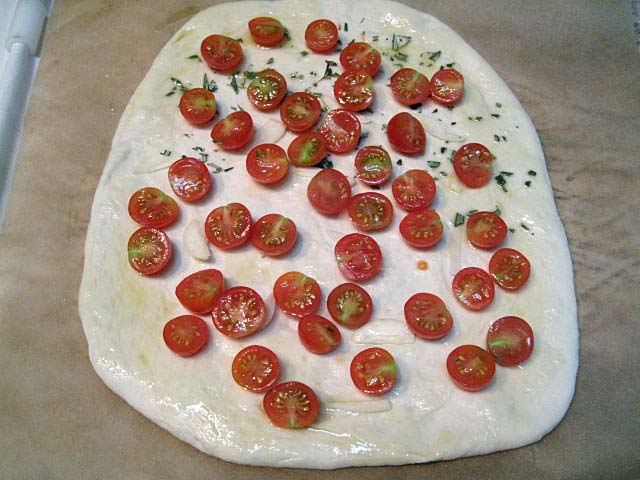
Pizza with Cherry Tomatoes, pre-bake

Pizza with Cherry Tomatoes, baked

Pizza with Roma Tomatoes, pre-bake

Pizza with Roma Tomatoes, baked
The results were wonderful! The dough stretched easily to paper thin without tearing and baked so crisp there was no sagging when a slice was help up by the corona. Biting into it was a noisy crunch. The flavor of the crust was delicious. The whole experience sold me on minimalist toppings.

Pizza bottom crust

Thin crust

Crust
I don't think adding a few capers, or olives or mushrooms would do any harm, but I don't think making pizzas with heavy saucing, lots of cheese or lots of anything will be tempting again.
The pizza was a nice follow-up to last night's bruschetta.

Bruschetta with fresh funghi porcini and with tomatoes and basel
David
Submitted to YeastSpotting











